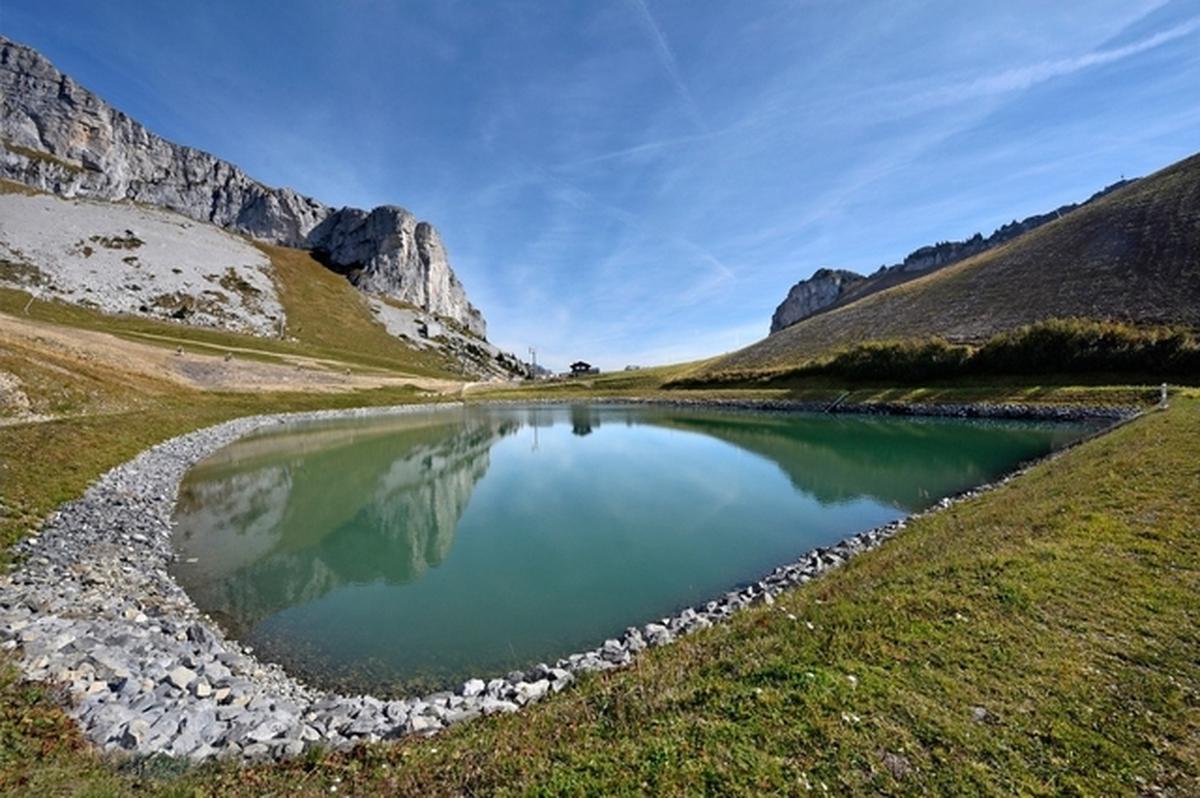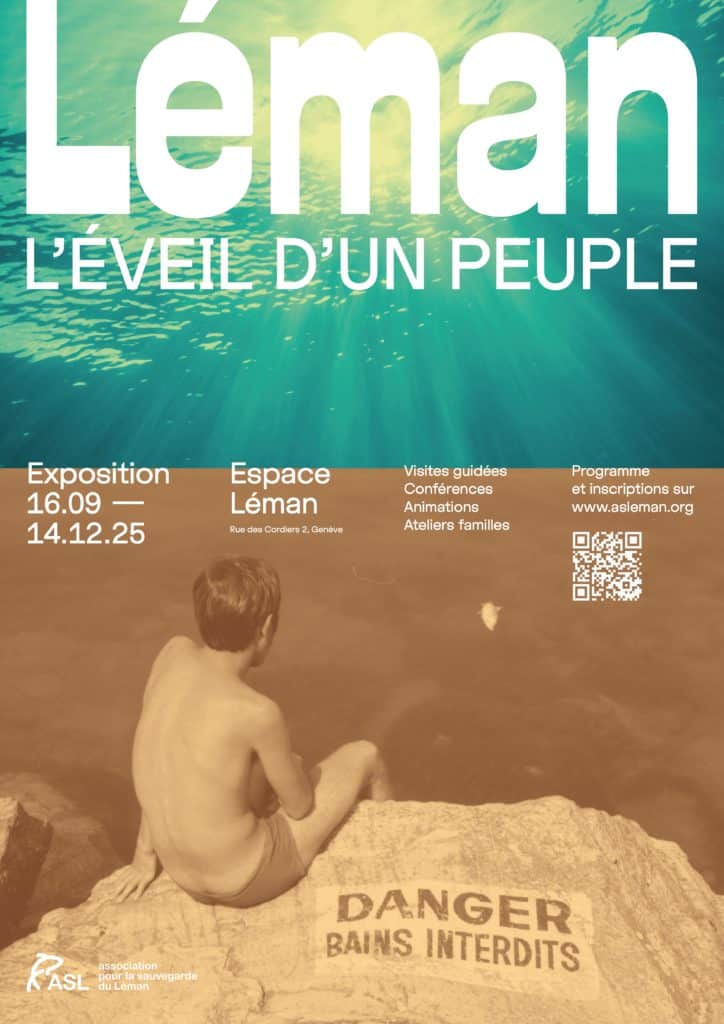Today, a ski season can last up to 5 months, from mid-November to mid-April, using artificial snow. In 2019, 53% of Swiss slopes were equipped for artificial snow. This boom is very energy-intensive. In 2018, estimates indicate that all the snow cannons in the Alps were equivalent to the electricity consumption of Basel-Stadt, or the equivalent of 4,273 gigawatt hours. A great deal of water is also needed: 500 litres of water are used to produce 1 metre of snow.3 of snow.
The water used is not totally lost, as it is partly reintroduced into the hydrological cycle when the snow melts. However, before falling back to the ground, the snow emitted by the snow cannons has several outcomes. It can either be blown away by the wind, change from a solid to a gas (known as sublimation) or evaporate. Loss through evaporation represents approximately 10%.
But where does this water come from and how does it get to the mountains?
Some of it is channelled to the top of the mountains through underground pipes. Another part is stored in so-called accumulation basins. To supply these reservoirs, water is taken from streams, rivers and lakes, and this is done several times depending on the intensity of the natural snow cover. However, it should be pointed out that in winter these are at their lowest levels. It is therefore imperative to maintain a minimum quantity of water in rivers and lakes after any abstraction so that they can perform their ecological functions. In other words, a minimum residual flow must be maintained to allow flora and fauna to survive in their natural environment.
The reduction in residual flow implies a reduction in flow velocity and therefore restricts the habitat of species used to strong currents. This can also hinder or even prevent the migration of certain species such as the common trout. The reduction in current generates an increase in suspended matter, which in turn can modify the physical and chemical conditions of the river bed. As a result, fish that spawn in gravel, such as the common trout and the grayling, have difficulty finding suitable spawning sites as the spawning grounds become clogged with fine sediments. Certain benthic organisms (living on the river bottom) are also at risk of losing their habitat due to the accumulation of matter. In this way, water abstraction zones have a direct impact not only on aquatic organisms but also on river dynamics.
Finally, what will be the effects on the natural environment of mobilising so much water over an entire winter, with a delayed return in spring and prolonged snow cover? Are the biological rhythms of species capable of adapting to these changes? Are the legal residual flows really sufficient?
Sources :
Pro Natura Magazine (2022) - Artificial snow: a trompe-l'œil winter tale, pp.4-11.
Federal Office for the Environment (FOEN) (2009) - Abstractions from watercourses, p.5
Libération (2004) - Artificial powder not quite as white as snow
Photo credit :
Caption: Chaux-de-Mont reservoir ©24 Heures


